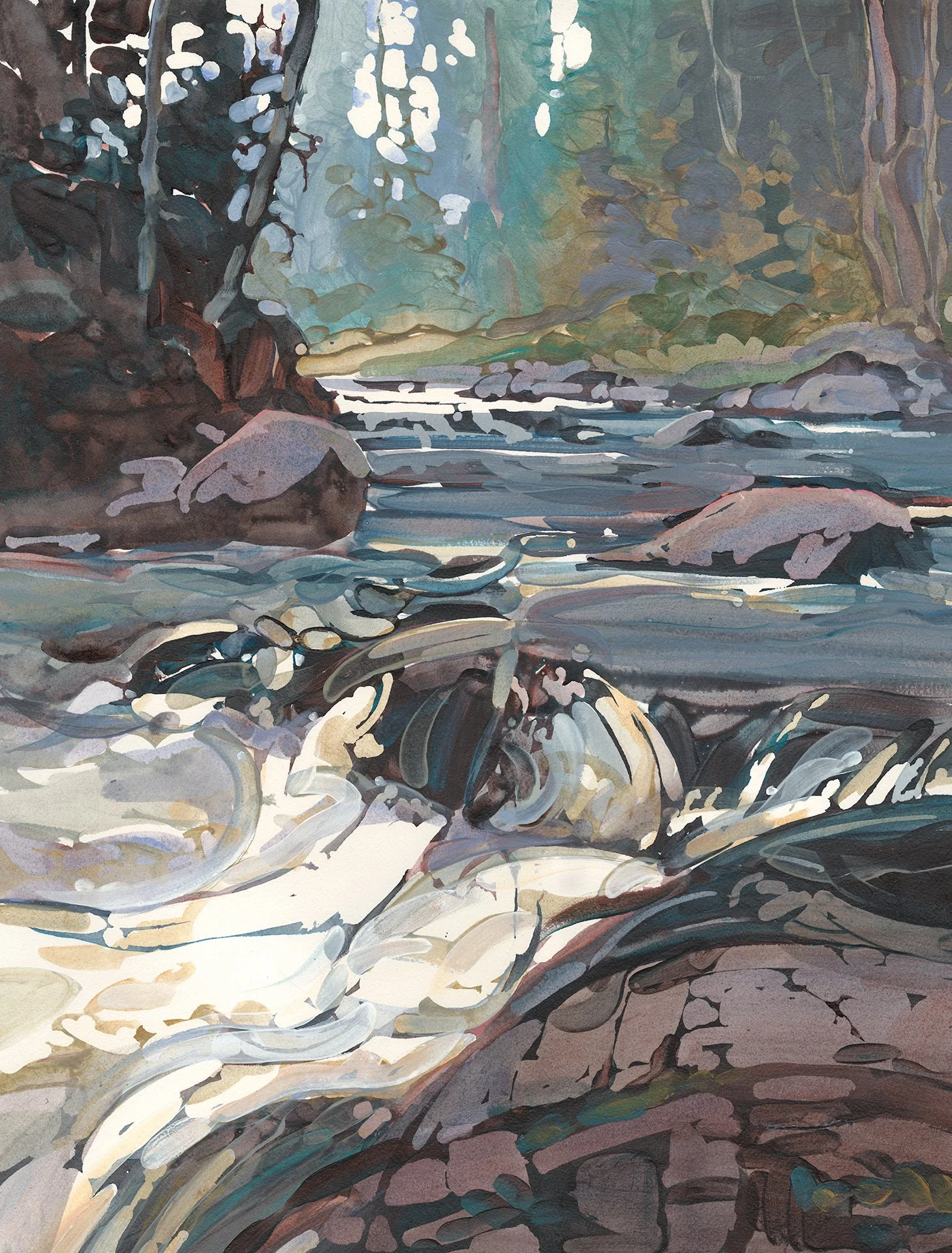DAN WIEMER
2 Day “Creative Combination: Watercolor & Acrylic” Workshop
December 8 & 9, 2022 9:00-4:00
$235
Good painters are first good designers. Learn concepts that allow you to find strong abstract shapes in your scenes. We will learn about the different types of contrasts and how they add drama to your painting. The workshop will focus on painting like a printmaker – finding and constructing negative shapes to create mosaic-like paintings. Your learning experience will include demos, guided painting, self-exploration, and a bunch of fun.
We will end a little early on the second day to set up our work which will be on display in the working side of the studio during Dan Wiemer’s Artist Reception which runs from 5 to 8PM. This is a great opportunity to learn, have fun and get visibility to your art.
Supply list
Many people already have supplies that are fine. Bring those; you can impress your neighbors and your teacher.
WATERCOLOR PAINTS: I use a fairly traditional collection of colors. If you have others you enjoy working with that’s fine, bring them. Mine include cerulean blue, cobalt blue, ultramarine blue, raw sienna, burnt sienna, Cadmium or winsor red, alizarin crimson (or permanent rose), Sap green, viridian and Paynes gray or neutral tint that I often use for value studies. You may have some wonderful new colors to show me! It is easier for watercolor artists to have the paints already squeezed into and dried in a plastic palette. If you prefer working with fresh-squeezed paint that is fine as well. If you choose the dried paint option, I recommend you do this process several days prior to the workshop.
ACRYLIC PAINTS: Bring several 2 oz. tubes of acrylic paints, a small container of acrylic matte medium, and a 9” or 10” white plastic plate to use as a palette. Suggested paint colors: Raw sienna, quinacridone burnt orange, cerulean blue, cobalt blue, light ultramarine blue. I use Golden brand acrylic tube paint. If you have similar or additional colors, bring them.
BRUSHES: Bring several different size brushes. My watercolor brushes differ from my acrylic brushes. I use a round pinky-sized synthetic brush for my masking and acrylic painting. You probably already have your favorites.
PAPER: Sheets or blocks are fine, just make sure it is 100% rag (cotton). No student-grade paper for your sake and mine. Student grade paper leads to more frustration and pain than the money you save. There are many fine rag papers. I recommend 140# Arches cold pressed or hot pressed because this can handle the repetitive masking process of the technique you will learn. Softer papers are not sufficient for this process. All of our studies will be 11x15 quarter sheets or smaller.
OTHER: Pencil, sketchpad or copy paper, soft eraser (Magicrub) or something like a white eraser, a thick black marker, Windsor-Newton masking fluid, clear water container, roll of paper towels, board or piece of Masonite to tape down loose paper, masking tape.
If you choose, bring some paintings that you are struggling with and would like a constructive critique. We all have different setup areas when we paint, bring whatever makes you work comfortably. Bring what you have, don’t spend a whole lot of money and change your palette for this workshop, I am not that fussy. If you have any questions about supplies or the workshop don’t hesitate to call or email me. 651-276-5559 danwiemer@gmail.com Thanks - Dan Wiemer
Dan’s statement:
For me, the process is the product. My work is a reflection and response of my love of the natural world.
I want my work to reflect an energy and directness.
First and foremost I consider myself a landscape artist. The majority of my work is created in watermedia. I paint both on location (plein air) and in the studio. I utilize the opaque nature of acrylic and the transparent qualities of watercolor to create contrasts. As a past president of the MN Watercolor Society, I see firsthand the endless variety of ways to handle watermedia, and this excites me.
Trained as a Graphic Designer, (B.A. Iowa State University) I play with the shapes and textures of the landscape. I try to find rhythms in the scene that translate into exciting motifs. I don’t try to replicate nature, I try to distill, stylize and give the viewer my interpretation, something they can be a part of. Currently I am a fine artist, illustrator and workshop instructor. Through an artist exchange program, I was fortunate enough to have spent three weeks in China painting and teaching. I feel I am only beginning to explore.
